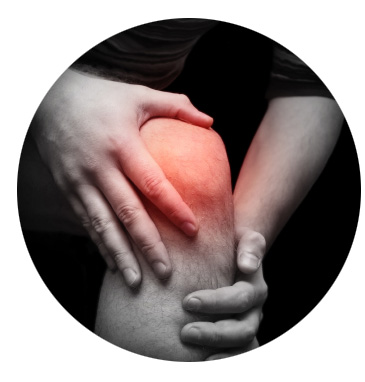You’re lying on your left hip with the right leg up in air supporting your opponent as you attempt a sweep. Suddenly you hear a sudden pop and feel pain on the inside of your knee, but you decide to keep rolling. After class the knee feels stiff and a little sore, but you decide it’s not a big deal and you should be fine for class tomorrow. Next week you roll and it feels a little better, but you hear and feel some clicking when you squat and begin to wonder if this is normal. Sound familiar?
 Knees injuries are all too common in BJJ since the very nature of the grappling arts is to place your opponent in joint locks. If you have not had any knee injuries in your training, chances are you will at some point in time. The knee is very susceptible to sprains and strains, and repetitive traumas over time will lead to chronic conditions like chondromalacia and osteoarthritis. The most common injuries we seen in our office are medial collateral ligament (MCL) sprains, meniscus injuries, patellar dislocations and anterior cruciate ligament (ACL) sprains and tears. So is it okay to train through knee pain? The answer is sometimes, but not always. Pain is the physiological response we feel from tissue damage, abnormal stress, irritation or inflammation on connective tissues, muscles and bones. Listen to your body, heed the warning signs, and change the intensity and frequency with which you train to allow for healing.
Knees injuries are all too common in BJJ since the very nature of the grappling arts is to place your opponent in joint locks. If you have not had any knee injuries in your training, chances are you will at some point in time. The knee is very susceptible to sprains and strains, and repetitive traumas over time will lead to chronic conditions like chondromalacia and osteoarthritis. The most common injuries we seen in our office are medial collateral ligament (MCL) sprains, meniscus injuries, patellar dislocations and anterior cruciate ligament (ACL) sprains and tears. So is it okay to train through knee pain? The answer is sometimes, but not always. Pain is the physiological response we feel from tissue damage, abnormal stress, irritation or inflammation on connective tissues, muscles and bones. Listen to your body, heed the warning signs, and change the intensity and frequency with which you train to allow for healing.
Contusions and mild knee sprains/strains occur frequently, are usually self-limiting, and do just fine with a little rest, ice, compression and NSAIDs. What about those clicking and grinding sounds? Is it normal? Does it need to be checked out? The clicking sound, referred to as crepitis, is usually benign and just the sound of connective tissues moving over bone or simple gas in the joint capsule being released. Clicking in the knee that is accompanied by pain, locking or instability is not normal and should evaluated.
You should be able to perform a few simple movements without pain, locking or giving out in the knees. A squat test or deep knee bend with equal flexion on both sides. Forwards, backwards, and side lunges without pain or instability. Light jogging progressed to running and with plant and turn movements. If any of these movements are painful, it’s wise to take some time off and get the knee evaluated.
Here’s a quick guideline that we use to determine if a BJJ athlete is ready to get back on the mat after a knee injury:
1. There is no obvious swelling
2. Full range of motion is present in the knee
3. There should be full strength with weight bearing and non-weight bearing movements
4. There is no instability in the knee joint
5. No neurological symptoms like numbness or tingling are present
If you have any of these symptoms, you may not be ready to get back on the mat. Continuing to train with these symptoms can lead to further injury as well. We always tell our patients it’s better to take a few weeks off than to have to take many months off from recovering from surgery.
Dr. John H. Park, D.C.
http://www.yourmmadoctor.com/content/default.aspx
Dr. Park is a chiropractic physician specializing in sports medicine and orthopedics. He is also a BJJ blue belt training under Pedro Sauer in Gaithersburg, MD.





